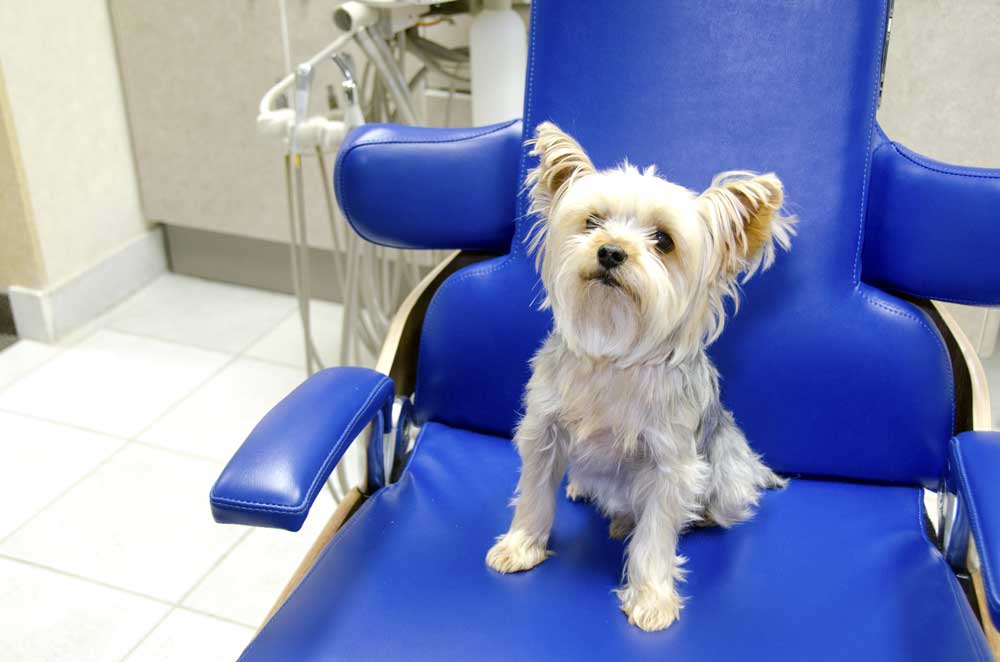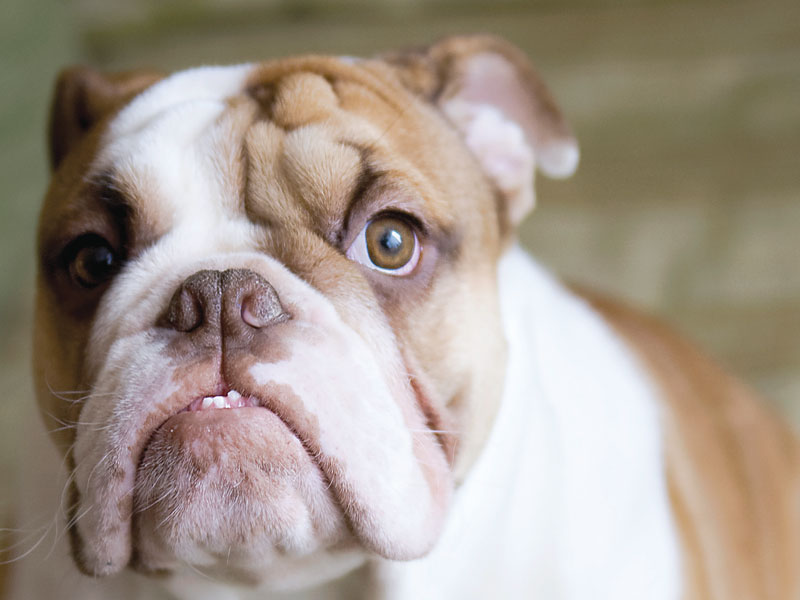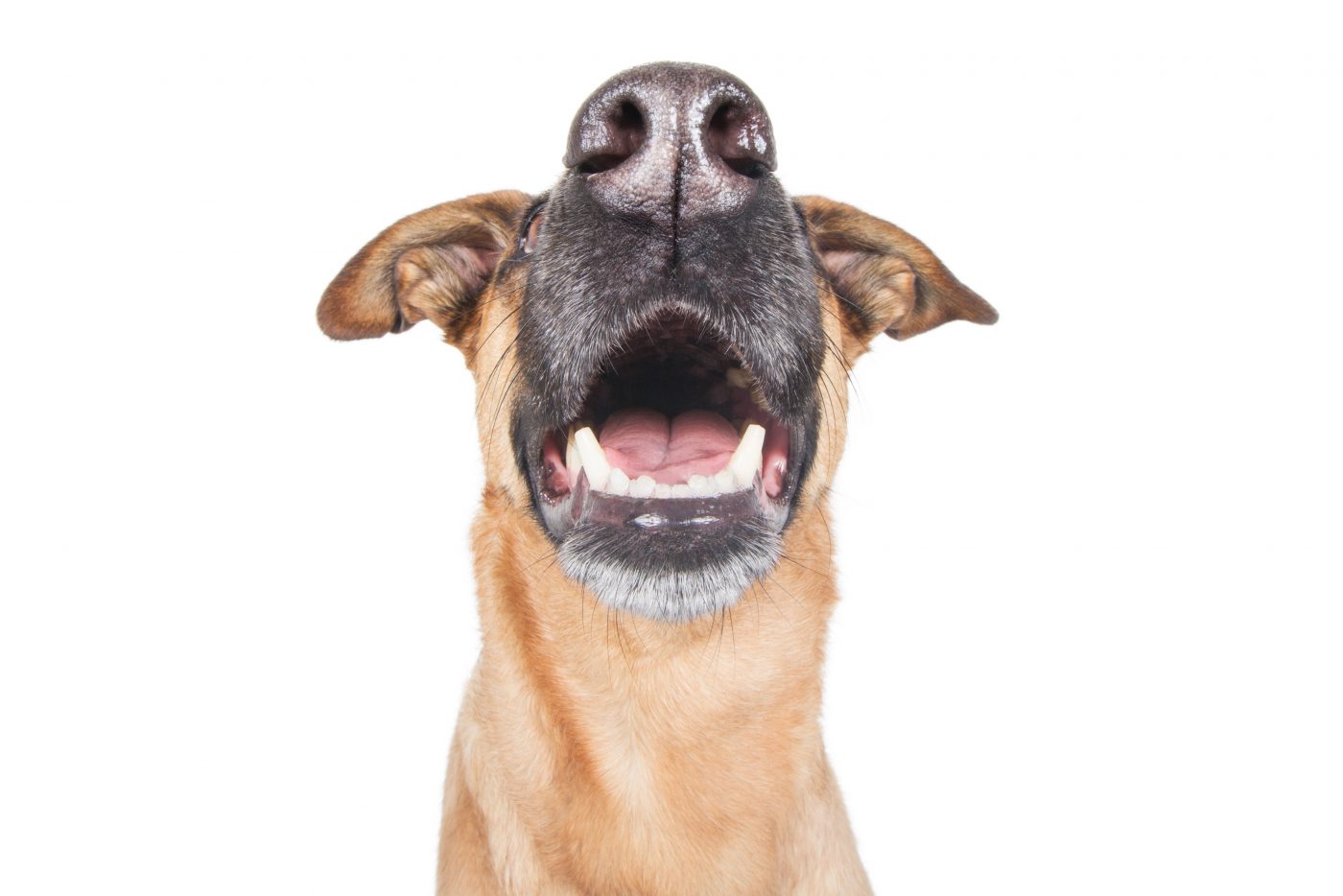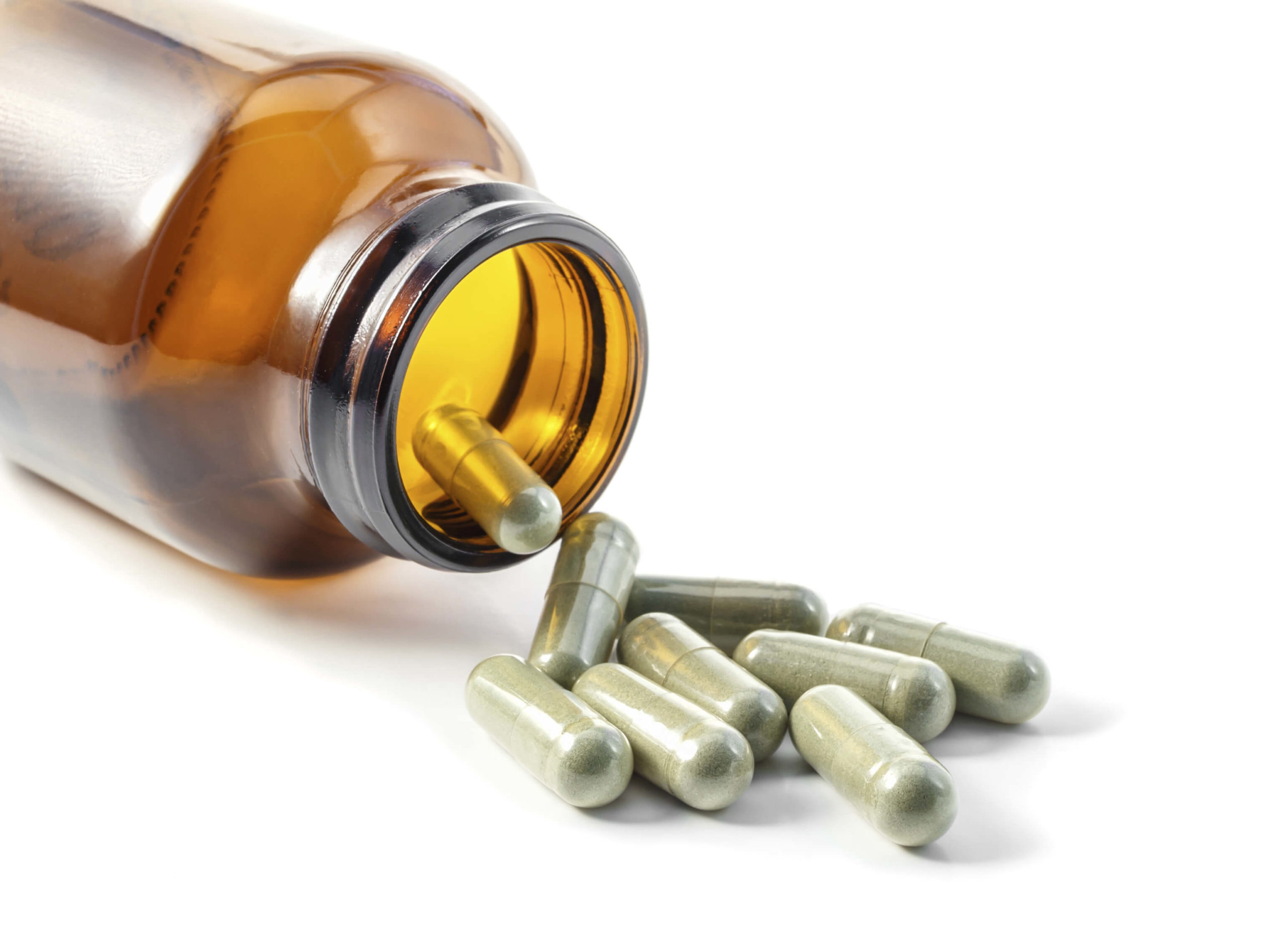Periodontal disease is common in all dogs, but factors such as breed and mouth conformation make some pooches more susceptible.
Periodontal disease is one of the top conditions veterinarians see in dogs. It affects not only the teeth and gums (gingiva) but the supportive structures that keep the teeth in place (such as the periodontal ligament or alveolar bone). Although all dogs are at risk for dental issues, some are more prone than others, depending on their breed, genes, the shape of their mouths, and even how much (or not) they chew their food.
The stages of dental disease
Periodontal disease is primarily caused by the accumulation of oral cavity bacteria (plaque), a thin and translucent (often clear to light tan) layer that’s challenging to see with the naked eye. Within days, plaque deposits thicken to become dental tartar, with an opaque tan to brown appearance. Tartar then mineralizes into thick calculus, appearing yellow to brown with an abrasive (sandpaper-like) texture.
Gingivitis (gum inflammation) develops in association with all steps of this process, and weakens the periodontal ligament, which normally firmly anchors the tooth to the underlying alveolar bone. Periodontitis refers to the inflammation and damage to tissues associated with the teeth (gingiva and periodontal ligament); it causes gums to recede (gingival recession) and teeth to loosen.
Dogs with more advanced stages of periodontal disease can exhibit anorexia (decreased appetite), difficulty chewing or swallowing food, ptyalism (drooling), and even behavioral changes (lethargy, exercise intolerance, mood changes, etc.).
The whole body is affected
One of the aspects of periodontal disease that many people do not consider seriously enough is the toxic effects oral cavity bacteria have on all body systems. Bacteria from the mouth enter the blood through inflamed gums or exposed blood vessels (tooth damage can expose the internal pulp cavity) and circulate throughout the body.
“Dogs and cats having periodontal disease are more likely to have histopathologic changes in the heart, kidney and liver,” says veterinary dentist Dr. Curt Coffman. Histopathologic changes are cellular abnormalities. “Periodontal disease can shorten a pet’s life by affecting vital organ systems.”
Risk factors
An improper diet and lack of regular dental care are two main causes of periodontal disease, but some dogs seem to have “bad teeth” despite efforts to promote better dental health. A predisposition to periodontal disease occurs for a variety of reasons.
1. A dog’s mouth conformation (the way it’s structured) may make him prone to dental problems. Dogs having wide mouths with irregularly positioned (rotated, etc.) teeth tend to be more prone to periodontal disease than dogs with longer or narrower mouths. The working theory is that the unusually placed teeth create a surface that more easily permits the accumulation of plaque and is less permissive to the potentially cleansing action of chewing.
2. Brachycephalic (short-faced) dogs have mouth conformations that cause a higher incidence of periodontal disease. The Brussels griffon, English and French bulldog, Shih tzu, Lhasa apso and pug – and their mixes – fit the short-faced mould and need extra dental care.
3. A dog’s genetics also plays a role in overall oral cavity health. Certain breeds and their mixes are well known to have periodontal disease, seemingly regardless of life stage. Have you ever heard the term “Yorkie mouth”? The Yorkshire terrier is known for severe dental issues, as are other small dogs like the Chihuahua, Pomeranian, poodle, and their mixes. Electing to adopt one of these petite pooches means you have to be especially vigilant in promoting periodontal health from as early an age as possible.
4. Some dogs are avid chewers of food while others barely exert any effort when masticating (chewing) their meals and treats. The action of chewing can help remove plaque, tartar and even calculus from tooth surfaces. You can encourage chewing by providing your dog with the appropriate raw, meaty bones or safe, non-toxic chew toys. Ensure that any object chosen for chewing is non-traumatic to the teeth, and non-toxic to the internal organs.
| 1 | Gingivitis | Redness at the gum margin and bad breath |
| 2 | Early periodontitis | Less than 25% support loss |
| 3 | Established periodontitis | Between 25% and 50% support loss |
| 4 | Advanced periodontitis | Greater than 50% support loss |
Keep on top of it
The best practice is to prevent periodontal disease from happening instead of addressing it once bad breath or other associated health issues affect your dog. This takes dedication and consistency, especially if you have a breed that is prone to these problems. Parents brush their children’s teeth until they are old enough to do it on their own, but dogs never reach the stage of being able to provide their own dental care without human assistance. As a result, you need to engage in practices that promote your dog’s periodontal and whole body health on a daily, lifelong basis.
Don’t forget nutrition
Unfortunately, many people have been deceived by marketing (and sometimes veterinary recommendations) into thinking that a diet based on commercial kibble helps keep teeth clean. Kibble shatters when teeth penetrate the surface, so it provides no substrate to scrape against the teeth while the dog chews. This is the case unless the kibble is specifically formulated to maintain its shape and have a cleansing effect during mastication. Additionally, many dogs don’t chew their food well, as mentioned above, and instead swallow the kibble pieces whole.
In my practice, I’ve noted a correlation between the type of food my patients eat, and their periodontal health. Whatever their breed, dogs eating diets formulated with whole food-based ingredients including real meat, fresh fruit and vegetables, and whole grains tend to have a lower incidence of periodontal disease than those eating diets containing “meals and by-products”.
Whether you have a greyhound or German shepherd, or an especially susceptible breed like a Yorkie or Chihuahua, start with home dental care as soon as possible, feed him a quality diet, encourage chewing, and take him to the vet for regular dental checkups.








